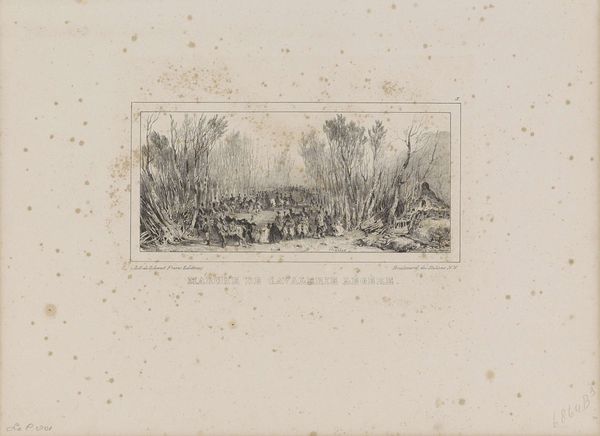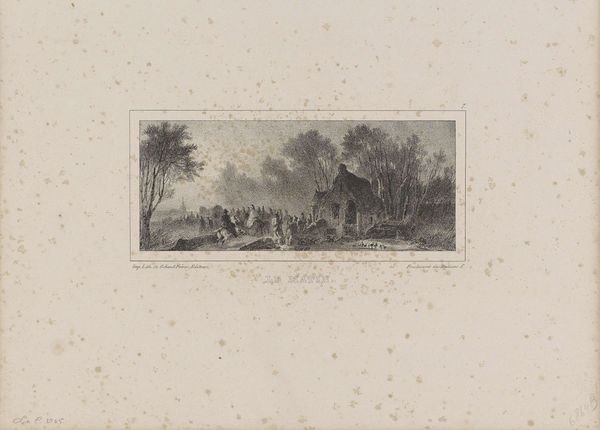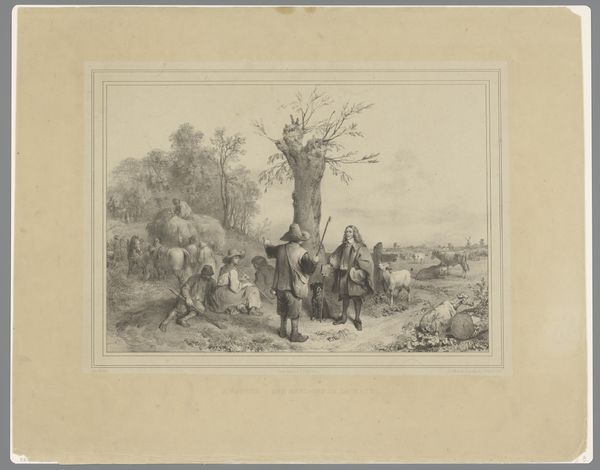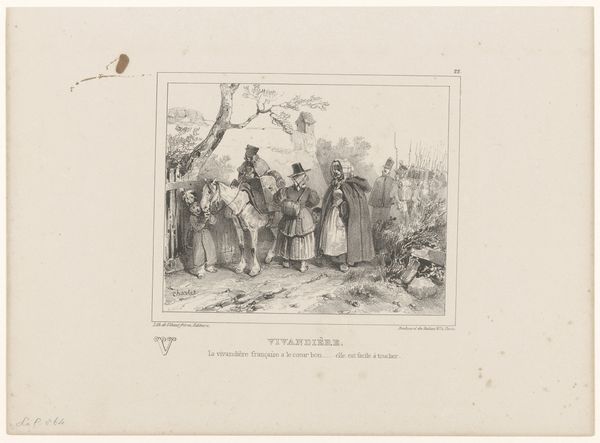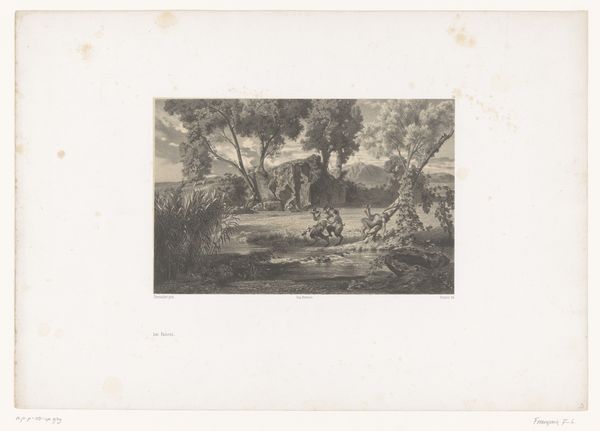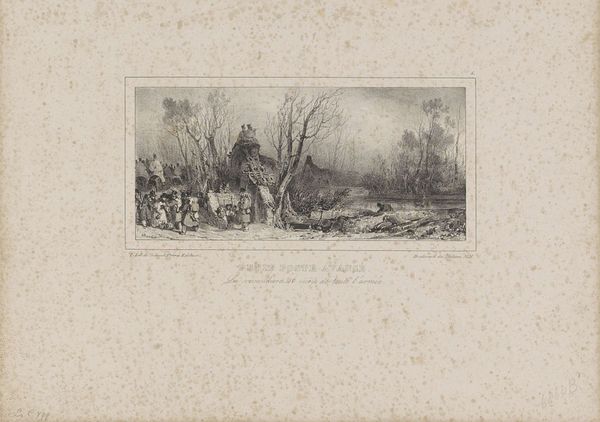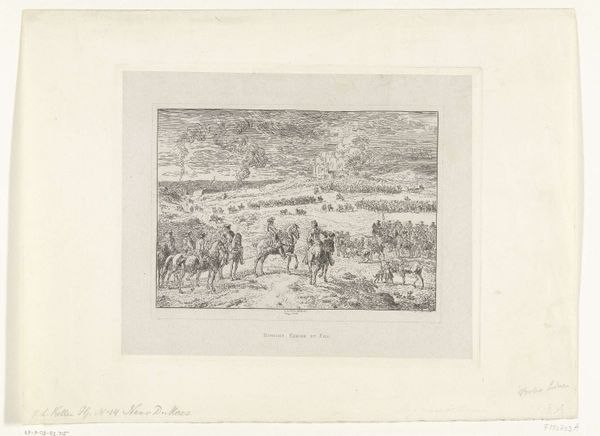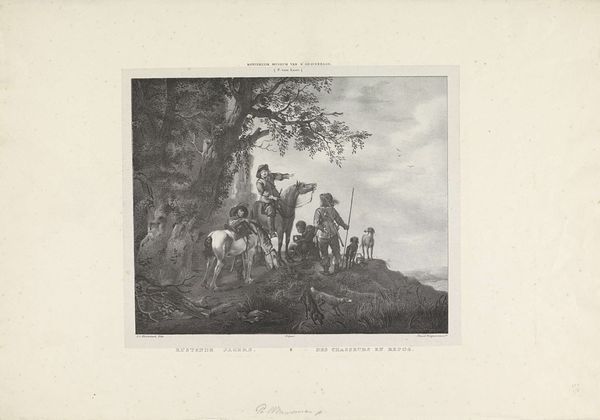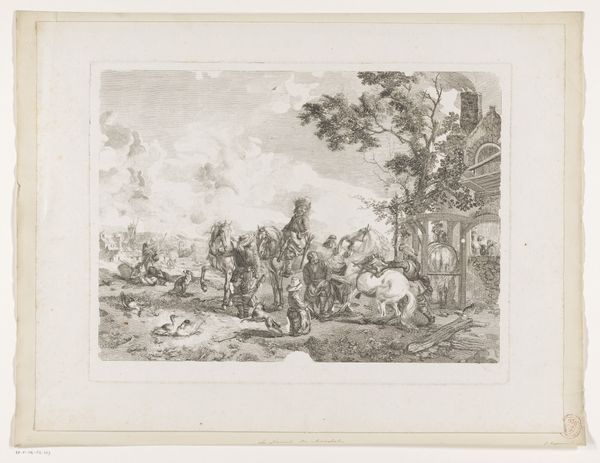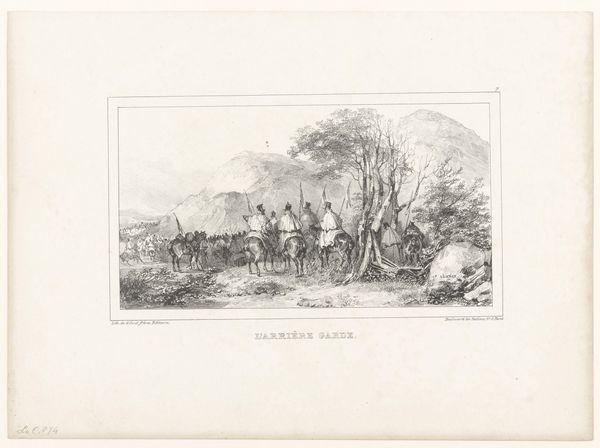
drawing, print, engraving
#
drawing
# print
#
landscape
#
genre-painting
#
engraving
Dimensions: height 245 mm, width 340 mm
Copyright: Rijks Museum: Open Domain
Curator: Here we have "Franse patrouille, 1832" by Nicolas Toussaint Charlet, created sometime between 1832 and 1833. It's a print, an engraving to be exact, that resides here at the Rijksmuseum. Editor: At first glance, I'm struck by its rather somber tone. The delicate lines and high contrast, born of its material process, give the whole scene a tense, almost ghostly air, wouldn't you say? Curator: Definitely, it speaks to the realities of 19th-century life. Charlet often depicted military scenes and everyday life with a blend of romanticism and realism, in contrast with the glorious scenes portrayed by state sanctioned works. You see a group of soldiers engaging with civilians near what seems to be a religious shrine. Editor: Which draws immediate attention to social relations; who has power, who does not? Given this was France after the revolution, what does it suggest about class and control? What about the material production of printed matter intended to circulate and inform French culture? Curator: He captures a poignant moment—a brief pause, perhaps during military patrol? There is a weariness about the figures, they almost blend into the landscape itself, don’t you think? Editor: Absolutely, the artist’s choices emphasize the laborers through meticulous labor: the detailed engravings making their existence material to us. But then who are the consumers of this artwork, and how are their values informed by Charlet’s images? Curator: Interesting points to ponder about patronage and distribution. For me, beyond all those socio-political elements, I see this humble moment where the lines between the protectors and the protected blur a bit, if even fleetingly, and for me the artistry captures those ambiguities beautifully. Editor: Yes, art like this reveals a crucial view into how art shapes reality as well as documents it; how production, consumption, and circulation come together. Thank you for taking us deeper into this piece.
Comments
No comments
Be the first to comment and join the conversation on the ultimate creative platform.
